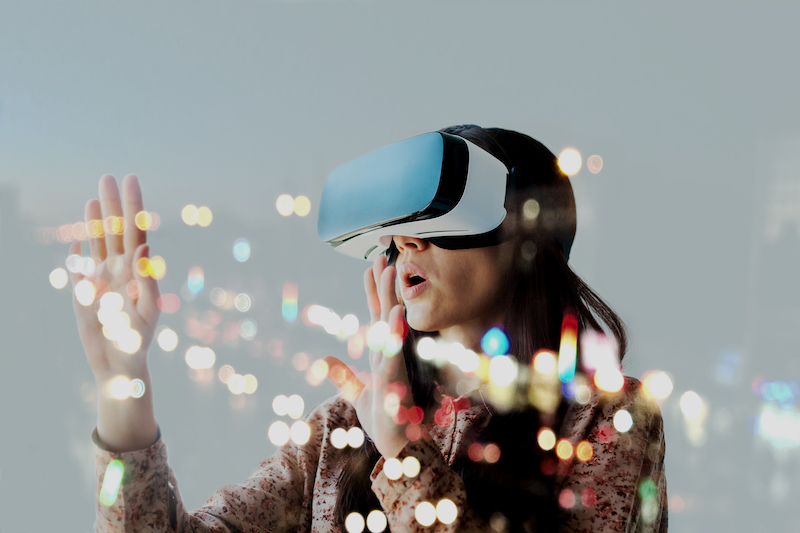Agenda: The Real Thing
With new technology opening up innovative ways of viewing and collecting art, what does it mean to attend a commercial show in the 21st century?
Words: Tai Mutsuji
I’M STANDING in the middle of Dominik Mersch Gallery listening to Gary Deirmendjian describe his larger-than-life sculpture Sediment I (2018). It’s a robust corporeal piece that twists and turns in a configuration that simultaneously feels fleeting yet permanent. Before Deirmendjian finishes explaining the work, however, I turn to my right to examine his photograph Stack (2018), which he soon begins to tell me was made using a flatbed scanner. I’m not really in the habit of cutting off artists when I meet them, but on this occasion I don’t feel bad. After all, I have never met Deirmendjian – just his voice.
Deirmendjian’s exhibition, a prevailing sense of disquiet, was taken down and packed away six months before I ever saw it. The exhibition that I am looking at is an immersive virtual memory of the show, immortalised on Dominik Mersch Gallery’s recently launched new website. “I think the documentation is really important for the artists and for the gallery; we’re not talking about photos but the real thing,” gallerist Dominik Mersch explains to me. “In 10 or 20 years’ time you can still walk through the exhibition.” But the virtual exhibition is more than just an archive; it continues to shape the gallery’s present. “For someone who has a lot of international collectors, it’s perfect because they can’t physically come and see the shows,” Mersch says. “It’s a really big investment, but you can send the exhibition anywhere in the world.”
Unintentionally or otherwise, virtual exhibitions, like Mersch’s, ask us to question what it means to attend a commercial show today. The virtual exhibition, through no other provocation but its existence, seems to bring into question the longevity of the gallery space – as it untethers the artistic work from its physical home. Yet many argue that there is simply no replacement to seeing a work in person. “You can look at images online, sure, but they are flat, you can’t conceive of the depths of the show. It’s just different when you are in the room,” observes Roslyn Oxley of Roslyn Oxley9 Gallery. “For someone coming across a new artist, I think it is difficult for them to see how amazing it is, or how dull it is, unless they see the work in person.” While these sentiments feel intuitively correct, they also feel somewhat dislocated from our consumption of media, today. Swiping through art on Instagram no longer feels like a secondary experience or some mnemonic device – despite all that we know and profess to – it feels primary. Yet (for the most part) it isn’t. “There are so many qualities of a work and exhibition that remain unarticulated when experienced only as online representations,” submits James Gatt, associate director at Sarah Cottier Gallery. “It’s impossible to reproduce the presence or intimacy.”
However, in reality, there is not a binary between online representations of the art and the in-person observation of these pieces – this is not that well-worn story of the old guard versus the new. Mersch, for instance, staunchly defends the primacy of the bricks-and-mortar space, while Oxley was equally interested in the new modes of virtual display that I discussed with her. For both, it was a matter of degrees. “I think a lot of online images can tickle the imagination or one’s interest – but I always try to look at things, as much as possible, in the flesh,” Oxley says, in an attempt to characterise this balance. The difference that she appears to be pointing to is the difference between whetting one’s appetite and satisfying it.
And commercial galleries are proactively working to satisfy, as their shows have come to resemble their curated cousins of the public sector. Indeed, where the days of yore may have witnessed works from the stockroom (or whatever else was in reaching distance) splayed out across the gallery’s walls, today, the group show has become a far more curated and considered affair. Each work is destined to be sold individually, yet for the duration of the exhibition becomes part of something bigger – something greater than the sum of its parts. This has even led to galleries looking beyond their stable for fresh inspiration. “I have always admired many artists, and don’t have enough space at Galerie pompom to have them all,” explains gallery director George Adams. “So by having curated shows and by being able to invite artists that I have seen in graduation shows, or artists that are not represented in Sydney, this gives me the opportunity to be able to exhibit more artists.”
Whether or not the future will see the slow erosion of the physical gallery remains to be seen. Yet, all of my conversations have made one thing abundantly clear: it will not go without a fight.
This article was originally published in Art Collector issue 89, JUL – SEP 2019.







